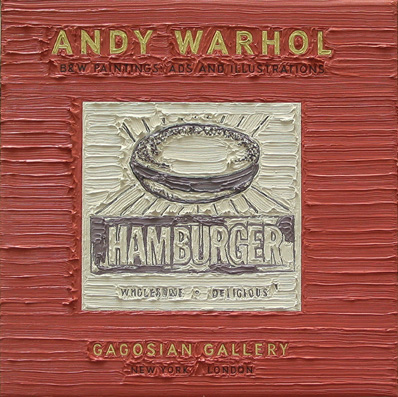by Artcards Review
on May 9th, 2011

Simon Linke Warhol, 2004. Courtesy Mireille Mosler Ltd.
(from the press release) No one seems to be sure what the decline of modernism’s cultural influence, beginning sometime in the 1950’s and 60’s, has led to. The return of narrative and ornament in the art and architecture of the 1970’s suggested an effort to break with the immediate past, but the privileging of rationalism as a guiding social order evident in the idea of markets finding their perfect equilibrium continues to dominate economic discourse, despite the occasionally irrational results. While architects like Frank Gehry, Zaha Hadid, and Rem Koolhaas seemed to have represented “a new way forward,” the prevalence of a creeping re-modernism found in the ubiquitous Corbusier-like, double-height urban lofts sheathed in glass and filled with mid-century modern furniture confirms the continued appeal of modernism’s aesthetic essentialism. Continue Reading More »
Comments closed
by Helen Homan Wu
on August 3rd, 2010

Carol Irving likes to interrogate “the truth” in a gutted manner. She has been examining that “truth” not only in herself but also in over 600 volunteers through multiple “truth” happenings held at office spaces in Manhattan. I had the opportunity to meet with Carol at Carriage Trade, in which her piece PL/90-0559A is part of the group exhibition entitled Mistaken Identities. Using an original polygraph, which is an old-fashioned lie detector, on herself and on others for a period of over 18 years, Carol is onto something here. The results of these tests look strangely familiar, with marks and symbols that we seem to relate to, although not quite sure why or how. Then the questions begin to surface, such as Have you noticed your smells have changed as you’ve grown old? Do you know anyone named Art? Her images may seem surreal and fictitious but these polygraphic tests were once forced on individuals up until the late 80s. Being interrogated can be an unbearable experience, but transforming this into an art form becomes an attractive practice. I’d certainly be interested to surrender myself to become lines and numbers rendered by a guilt detecting device.
 Continue Reading More »
Continue Reading More »
Comments closed




 RSS
RSS
